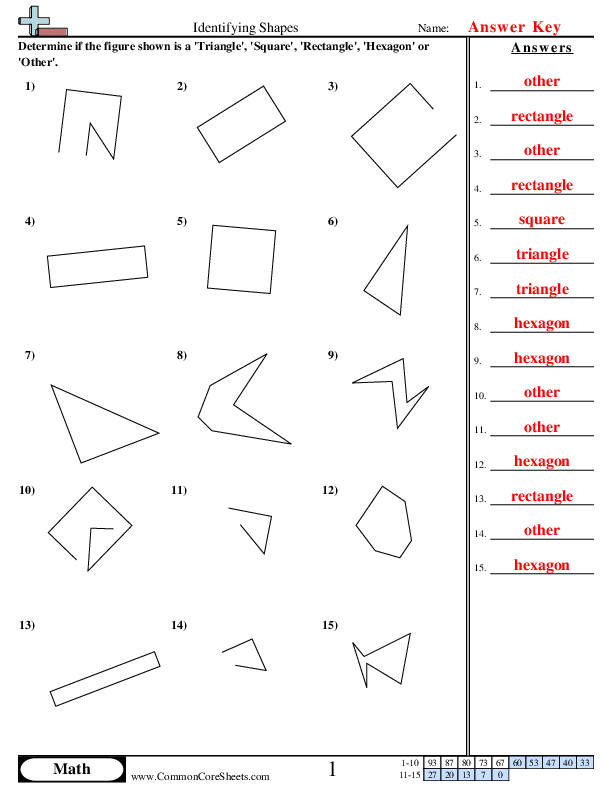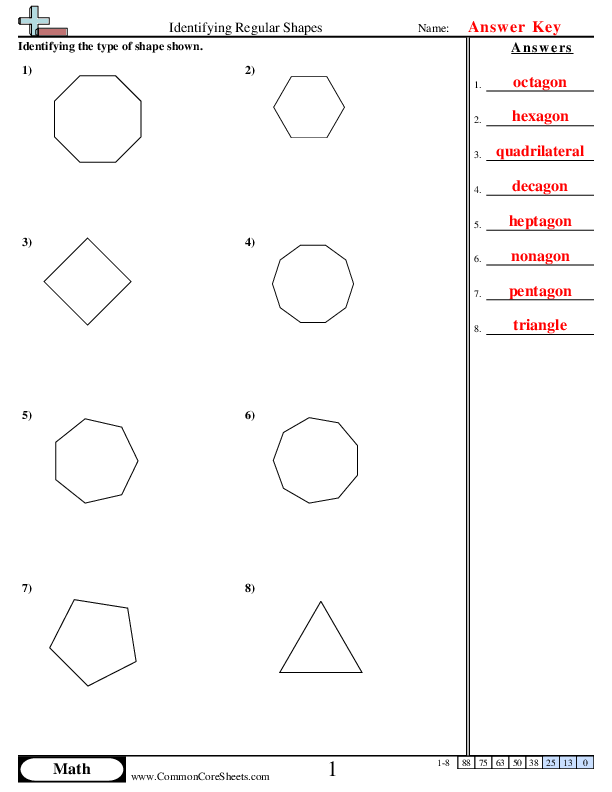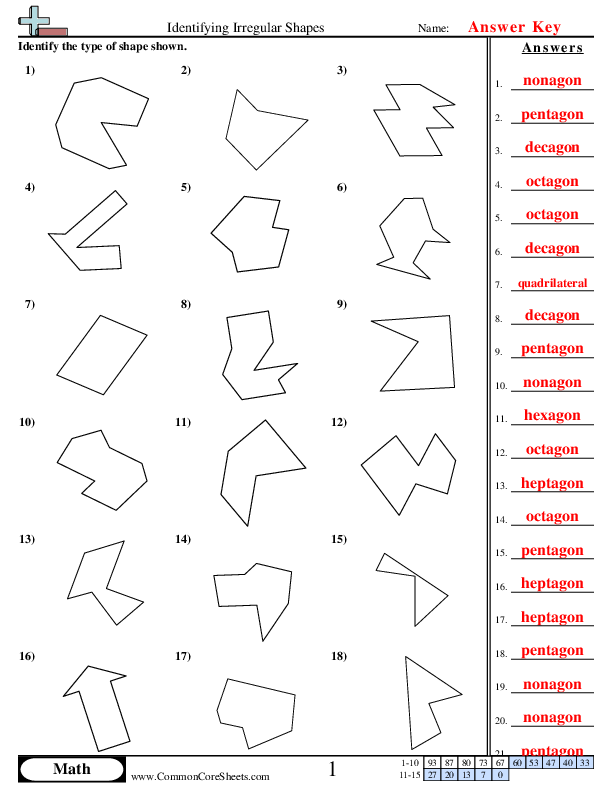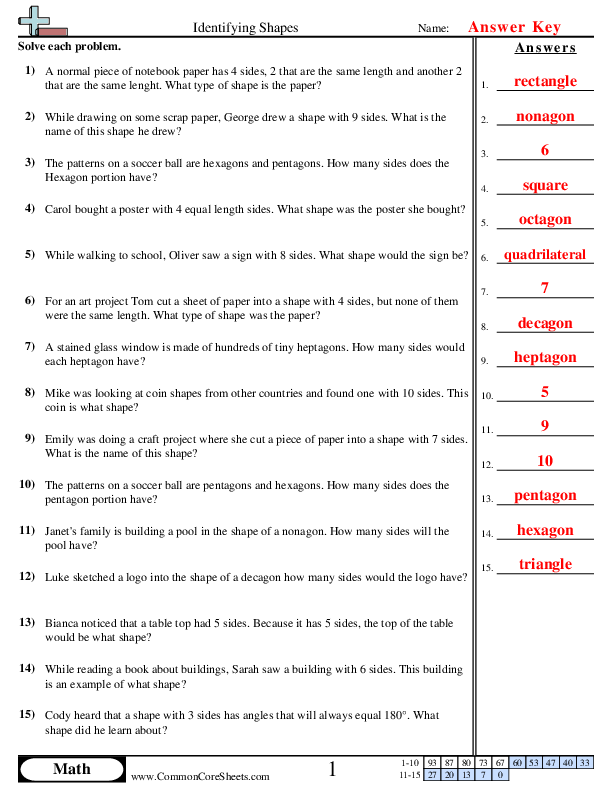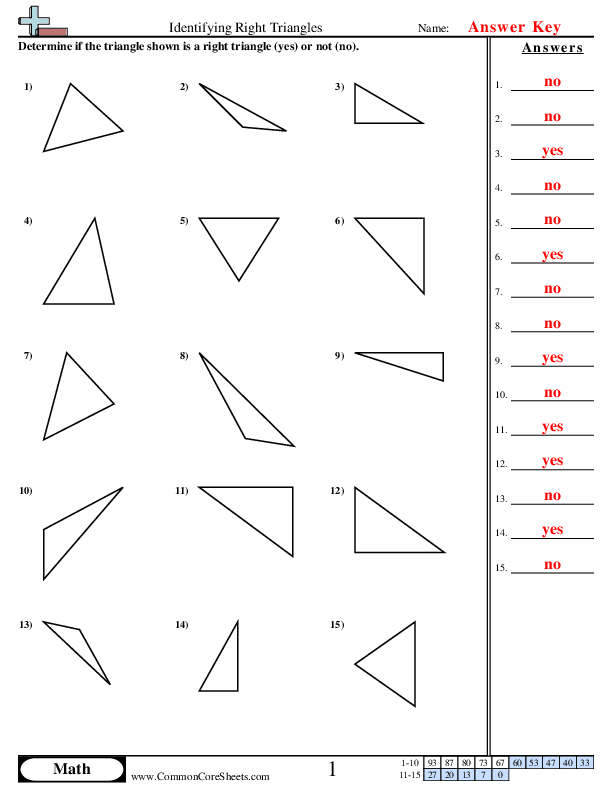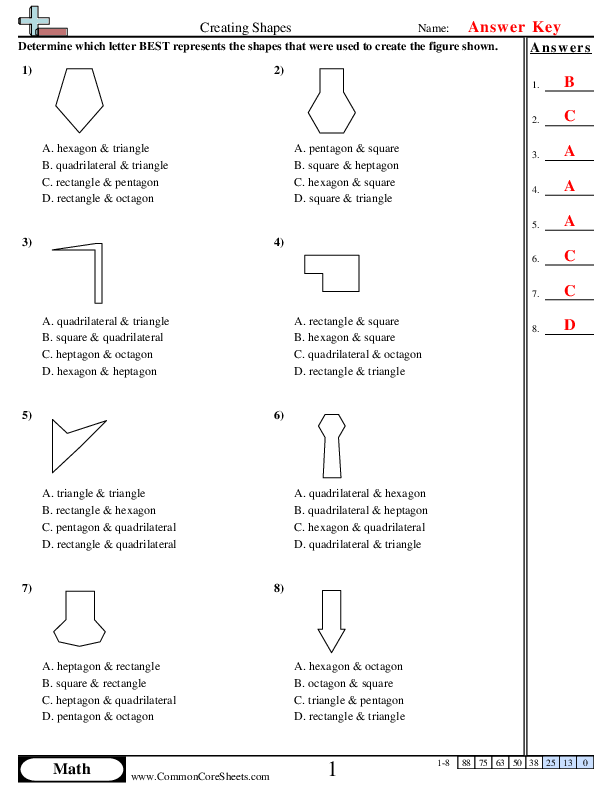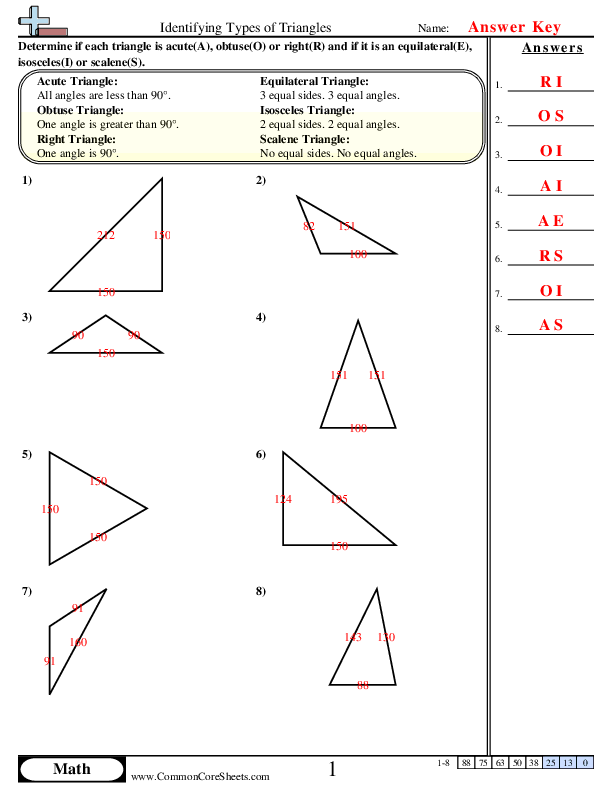identifying shapes Worksheets
Discover the best free shapes worksheets on the internet. Our worksheets help children learn about reflections, translations, the number of sides for everyday shapes and more! We have a wide variety of worksheets that include shapes ranging from basic triangles to complex hexagons and octagons. With our selection, your child can practice recognizing shapes while also learning about their properties. Our worksheets are easy to use and will help your child recognize shapes in a fun environment! With common core sheets, you can be sure you’re giving your child the best learning experience around. Try out our free shapes worksheets today!
Browse Sheets By Problem Type
Each worksheet has 15 problems identifying the type of shape.
Version 1
Version 2
Version 3
Version 4
Version 5
Version 6
Version 7
Version 8
Version 9
Version 10
Grab 'em All
Create New Sheet
Each worksheet has 20 problems determining if a shape is a quadrilateral or not.
Version 1
Version 2
Version 3
Version 4
Version 5
Version 6
Version 7
Version 8
Version 9
Version 10
Grab 'em All
Create New Sheet
Each worksheet has 8 problems determining the type of shape. Shapes are limited to Triangles, Quadrilaterals, Pentagons, Hexagons, Heptagons, Octagons, Nonagons and decagons.
Version 1
Version 2
Version 3
Version 4
Version 5
Version 6
Version 7
Version 8
Version 9
Version 10
Grab 'em All
Create New Sheet
Each worksheet has 8 problems determining the type of shape. Shapes are limited to Quadrilaterals, Pentagons, Hexagons, Heptagons, Octagons, Nonagons and decagons.
Version 1
Version 2
Version 3
Version 4
Version 5
Version 6
Version 7
Version 8
Version 9
Version 10
Grab 'em All
Create New Sheet
Each worksheet has 15 problems identifying a shape or the number of sides of a shape.
Version 1
Version 2
Version 3
Version 4
Version 5
Version 6
Version 7
Version 8
Version 9
Version 10
Grab 'em All
Create New Sheet
Each worksheet has 15 problems determining if a shape is a regular or irregular shape.
Version 1
Version 2
Version 3
Version 4
Version 5
Version 6
Version 7
Version 8
Version 9
Version 10
Grab 'em All
Create New Sheet
Each worksheet has 15 problems identifying a right triangle.
Version 1
Version 2
Version 3
Version 4
Version 5
Version 6
Version 7
Version 8
Version 9
Version 10
Grab 'em All
Create New Sheet
Each worksheet has 12 problems identifying basic solid shapes.
Version 1
Version 2
Version 3
Version 4
Version 5
Version 6
Version 7
Version 8
Version 9
Version 10
Grab 'em All
Create New Sheet
Each worksheet has 8 problems determining which two shapes were used to create a figure.
Version 1
Version 2
Version 3
Version 4
Version 5
Version 6
Version 7
Version 8
Version 9
Version 10
Grab 'em All
Create New Sheet
Each worksheet has 8 problems determining if a triangle is acute, obtuse or right and equilateral, isosceles or scalene.
Version 1
Version 2
Version 3
Version 4
Version 5
Version 6
Version 7
Version 8
Version 9
Version 10
Grab 'em All
Create New Sheet
